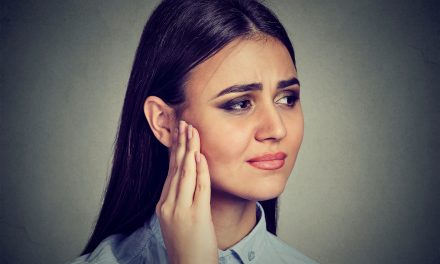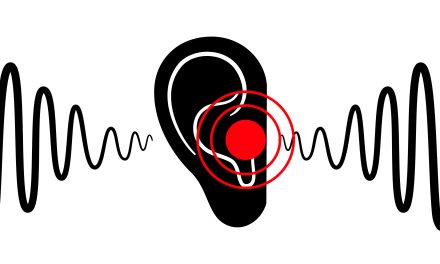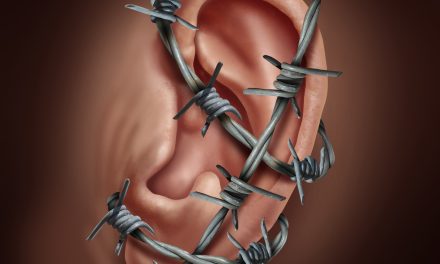Tinnitus is an experience many describe differently, often characterized by sounds like ringing, hissing, or buzzing in the ears. For some, it may resemble a high-pitched whistle, while others might hear roaring or even a cicada-like sound.
The presence of these sounds can significantly impact a person’s quality of life, leading to difficulties in concentration, sleep, and even communication. The impact varies widely from mild annoyance for some to severe disruption for others.
Understanding the nature of these sounds is crucial for those affected, as it forms the first step toward seeking help and exploring treatment options.
Those experiencing tinnitus should be aware of the many ways to manage it and when it might be necessary to consult a healthcare professional. By knowing that treatments and coping strategies are available, individuals can better navigate life with this condition.
Key Takeaways
- Tinnitus is the perception of noise like ringing or humming without an external source.
- It can affect concentration and sleep, impacting quality of life.
- Managing tinnitus involves treatments and strategies that can improve daily living.
Understanding Tinnitus
Tinnitus is a condition where individuals hear sounds without an external source. This can significantly affect a person’s quality of life. The article covers defining tinnitus, its different types, and its prevalence, along with its impact on health.
Defining Tinnitus
Tinnitus is the perception of noise or ringing in the ears. It’s not a disease but a symptom of an underlying condition. Individuals may hear various sounds, like buzzing, whooshing, or humming.
Subjective tinnitus is the most common type, where only the affected person can hear the sound. On the other hand, objective tinnitus is rare and can occasionally be heard by others during examination.
The condition can be temporary or chronic. Chronic tinnitus lasts longer than six months and may significantly impact daily activities. People with tinnitus often experience discomfort, distractions, and difficulties concentrating. Among underlying causes are hearing loss, ear injury, or circulatory system issues.
Different Types of Tinnitus
Tinnitus can be classified into several types. Apart from subjective and objective tinnitus, there is pulsatile tinnitus, where the sounds sync with the heartbeat. Each type may have different causes and treatment approaches.
In subjective tinnitus, potential triggers include exposure to loud noise, while objective tinnitus might be linked to vascular issues. Pulsatile tinnitus could indicate changes in blood flow or ear structure. Understanding these distinctions is crucial for proper diagnosis and management.
Awareness of these differences helps healthcare providers tailor treatments. Interventions may include sound therapy or counseling to manage symptoms. Comprehensive evaluation is necessary to determine the specific type and pursue the most effective care plan.
Prevalence and Impact on Health
Tinnitus affects a large segment of the population. It is estimated that 15-20% of people experience it at some point. While age is a factor, it can occur in younger individuals due to noise exposure or ear conditions.
The impact of tinnitus is profound. Many struggle with anxiety or depression resulting from the persistent nature of sounds. Affected individuals might find it challenging to engage in social activities or concentrate at work. Furthermore, sleep disturbances are common, exacerbating the impact on quality of life.
Managing tinnitus involves addressing these health concerns. While complete cures may be rare, treatments aim to lessen the seriousness of symptoms to improve daily functioning and emotional well-being.
Common Causes of Tinnitus
Tinnitus can be triggered by several factors, including environmental influences and health conditions. Each case can cause unique sounds, which may resemble buzzing, ringing, or hissing. Understanding these causes helps manage and potentially reduce symptoms.
External Factors and Lifestyle
Exposure to loud noises, like at concerts or working with heavy machinery, can lead to tinnitus. Noise exposure damages the tiny hair cells in the inner ear, often causing persistent ringing. Using ear protection, like earplugs, is crucial to avoid long-term effects.
Earwax build-up is another external factor. When earwax accumulates, it can block the ear canal, affecting hearing and causing tinnitus. Regular cleaning can prevent this issue, but avoid cotton swabs, as they can push wax deeper.
Certain medications, such as high doses of aspirin or certain antibiotics, might induce tinnitus. Individuals should discuss any concerns with their doctor when being prescribed new medications to weigh potential risks.
Medical Conditions
Various medical issues can also contribute to tinnitus. Ear infections or sinus infections may lead to temporary symptoms, affecting the ear’s pressure and leading to ringing sounds. Proper medical treatment can resolve these infections and alleviate the symptoms.
Head or neck injuries can disrupt ear function. Damage may cause irregularities in hearing, including tinnitus. It’s critical to seek medical attention if someone experiences tinnitus after an injury.
High blood pressure is another contributing factor. Increased blood pressure might amplify the sounds of tinnitus, making relaxation and stress management essential to reducing symptoms. Regular health check-ups help manage these conditions more effectively.
Symptoms and Diagnosis
Tinnitus can present various unique sound experiences and may accompany other health issues. A proper diagnosis requires understanding these sounds and related symptoms, often involving evaluations by specialists.
Identifying Tinnitus Sounds
Tinnitus sounds vary widely between individuals. Some describe a high-pitched ringing, while others hear buzzing or hissing. Occasionally, people report sounds like crickets or even identifiable tunes. The intensity can also vary, affecting the individual’s quality of life significantly. Some may experience it intermittently, while others endure constant sounds that disrupt everyday activities. Understanding these different perceptions is crucial when assessing the condition’s impact.
Associated Symptoms
Aside from the various sounds, tinnitus can be linked with other symptoms. Many experience dizziness or persistent headaches along with the ringing. There’s often an association with hearing loss, which can be both a cause and an effect of tinnitus. These additional symptoms can greatly influence one’s life, making it essential to address them during diagnosis. Identifying all related symptoms helps in managing the condition more comprehensively.
Professional Diagnosis
Diagnosing tinnitus involves thorough evaluations by healthcare professionals like audiologists or otolaryngologists. These specialists may perform audiological tests to assess hearing abilities. Advanced imaging techniques like MRI or CT scans might be done to rule out underlying conditions. During assessments, professionals also consider patient history and self-reported experiences to gauge the extent of tinnitus. A comprehensive diagnosis ensures that the management plan addresses all aspects of the condition effectively.
Treatment Options
Treating tinnitus often involves a combination of approaches. Medical treatments can address underlying causes; sound therapies aim to reduce the perception of tinnitus; and psychological methods help manage the emotional impact. Each person’s treatment plan may vary based on the severity and cause of their tinnitus symptoms.
Medical Interventions
Medical interventions can provide relief by targeting the root cause of tinnitus. Earwax removal is one common method that can help if excess wax is causing problems. Other medical strategies include the use of medications like antidepressants and antianxiety drugs to help lessen the symptoms.
Hearing aids are helpful for those with hearing loss and can reduce the clicks, ringing, or buzzing by amplifying external sounds. In more severe cases, some may consider cochlear implants. These devices bypass damaged parts of the ear and send signals directly to the brain, sometimes reducing the perception of tinnitus.
Sound Therapies
Sound therapies aim to mask or reduce tinnitus sounds. Sound therapy involves exposure to specific noises that can help mute the ringing. These treatments often include the use of a sound generator that produces white noise or pleasant environmental sounds to distract from tinnitus.
Wearable sound generators are portable units that can be worn throughout the day, providing a constant flow of sound to help cover the ringing tones. Additionally, some individuals might benefit from tinnitus retraining therapy, which uses sound masking paired with counseling to train the brain to ignore tinnitus noises over time.
Psychological Approaches
Psychological approaches are essential to help individuals cope with the emotional toll tinnitus can take. Cognitive Behavioral Therapy (CBT) is a well-known method that helps people change negative thought patterns and reduce the distress caused by tinnitus. This form of therapy can also teach relaxation techniques to manage stress levels.
Support groups and counseling sessions provide valuable platforms for people to share experiences and strategies. Understanding and addressing the emotional and psychological impact can significantly enhance one’s quality of life, providing a more holistic approach to managing tinnitus symptoms.
Managing Tinnitus at Home
Managing tinnitus requires a comprehensive approach that includes lifestyle changes, dietary considerations, and methods to protect hearing. These steps can help improve the quality of life by reducing stress and preventing further damage.
Lifestyle Adjustments
Lifestyle changes can make tinnitus easier to handle. Relaxation techniques like meditation or yoga may decrease stress, helping to lessen the perception of tinnitus. Regular sleep patterns can combat fatigue, which might make symptoms seem worse.
Daily Routine Improvements:
- Schedule quiet time daily.
- Practice deep breathing exercises.
- Engage in hobbies to maintain a sense of fulfillment.
Small adjustments can lead to significant relief, reducing stress and its impact on tinnitus symptoms.
Diet and Tinnitus
Diet has a surprising impact on tinnitus. Some foods and drinks might make symptoms worse. Caffeine and high levels of salt intake can increase tinnitus sounds. Limiting these can provide relief.
Suggestions:
- Reduce caffeine by choosing herbal teas instead.
- Use herbs to replace salt in meals.
- Stay hydrated to support overall ear health.
Some people find that a diet low in sugar and fat helps control symptoms, though results can vary.
Protecting Against Further Damage
Protecting one’s ears from damage is crucial. Loud noise exposure can worsen tinnitus, so wearing ear protection like earplugs in noisy environments can help.
Tips for Protection:
- Keep volume low on headphones.
- Avoid prolonged exposure to loud music or machinery.
- Use noise-canceling headphones to prevent the need for high volume in noisy places.
These measures can prevent further hearing damage, aiding in the management of tinnitus symptoms. Accessing helpful tools and resources will support hearing protection effectively.
When to Seek Help
Recognizing when to seek help for tinnitus can improve quality of life and prevent further issues. It involves noting changes in symptoms, selecting an appropriate healthcare provider, and preparing for your appointment effectively.
Identifying Worsening Symptoms
If tinnitus symptoms become more frequent or intense, it may signal the need for medical advice. Key signs include increased tinnitus volume, a noticeable decrease in hearing, or zeroing in on abnormal sounds amidst background noise. Sudden hearing loss should prompt immediate medical consultation.
Tracking symptom history, including duration, nature, and triggers, can help identify changes. Lifestyle factors, such as stress and exposure to loud environments, often affect symptom severity. Keeping a log of these details can assist both you and your healthcare provider in understanding your condition.
Choosing a Healthcare Provider
Choosing the right healthcare provider is critical in managing tinnitus effectively.
Begin with a primary physician who might provide initial assessments and necessary referrals to specialists. A hearing care specialist or audiologist is well-suited for more focused evaluations, especially if hearing loss accompanies tinnitus.
Optometrists with tinnitus expertise can help uncover underlying causes and suggest suitable treatments. Checking qualifications, experience, and patient reviews can guide you toward the most suitable provider.
Ask each potential healthcare provider about their approach to tinnitus management and how they handle complex cases.
Preparing for Your Appointment
Preparation is a key step for a successful consultation.
Gather a comprehensive symptom history, including when symptoms started, their frequency, and any associated lifestyle factors. List any medications, supplements, and relevant medical conditions, as these might influence suggestions and treatments.
Preparing questions for your healthcare provider ensures a focused and informative session. Consider inquiries about available treatment options, coping strategies, and the impact of persisting symptoms on daily life.
Bringing a companion can help you recall important points from the discussion. Leaving the appointment with a clear understanding of next steps aids ongoing management and alleviates concerns.
Preventive Measures
Preventing tinnitus involves several important steps focused on protecting your hearing. He or she should aim to limit exposure to loud noises which can damage the delicate structures in the ear.
This can be achieved by using ear protection such as earplugs when attending concerts or working in loud environments.
Noise exposure is a major risk factor for tinnitus. Keeping the volume down when using headphones or earphones is essential.
It helps in minimizing the risk of hearing loss.
Adopting good habits like taking regular breaks from excessive noise can make a difference. For instance, if someone is in a noisy setting, stepping away from the source periodically protects the ears over time.
He or she should also consider having regular hearing check-ups. Early detection of potential hearing issues can prevent further damage and related conditions.
Healthy lifestyle choices play a role too. Maintaining a balanced diet and managing stress can positively impact hearing health.
Integrating these habits into daily routines aids in hearing loss prevention.
Hearing Protection Tips
- Use earplugs or earmuffs
- Limit exposure to loud sounds
- Keep volume levels low on devices
Taking these preventive steps helps reduce the risk of developing tinnitus. These practices form an effective approach to safeguarding hearing health over the long term.
Frequently Asked Questions
Many people are curious about tinnitus and the sounds it involves. This section answers some common questions and aims to clarify the nature of this condition.
What are the different types of sounds associated with tinnitus?
Tinnitus can present as ringing, buzzing, hissing, or even clicking noises. Each person might experience these sounds differently.
In some cases, the noise can vary in frequency and volume, leading to unique auditory experiences.
How can I identify if the sound I am hearing is indeed tinnitus?
Tinnitus sounds are typically internal, continuous, and not caused by an external source. If the noise persists when there are no external stimuli, it might be tinnitus.
A medical professional can help confirm the diagnosis.
Are there specific sounds that characterize high-pitched tinnitus?
High-pitched tinnitus often resembles a ringing or screeching tone similar to the sound emitted by a tea kettle. Such sounds can be persistent and uncomfortable for those experiencing them.
In what way does tinnitus differ from regular noise heard in the ears?
Unlike occasional ear noise, tinnitus is persistent and not linked to any external sound. It is often described as hearing sounds “in the head” or “the ears” without a clear source.
Can you provide examples to illustrate what tinnitus might sound like?
Tinnitus might sound like crickets chirping or a high-pitched electronic humming. Some even compare it to the sound of wind rustling or water running. These examples vary widely among individuals.
What methods are available for objectively testing for tinnitus sounds?
Objective testing for tinnitus can include using tools like the Tinnitus Severity Index.
These assessments help determine the impact of tinnitus on daily life and categorize the types of sounds experienced.
For more on such methods, visit articles on assessing tinnitus.


















